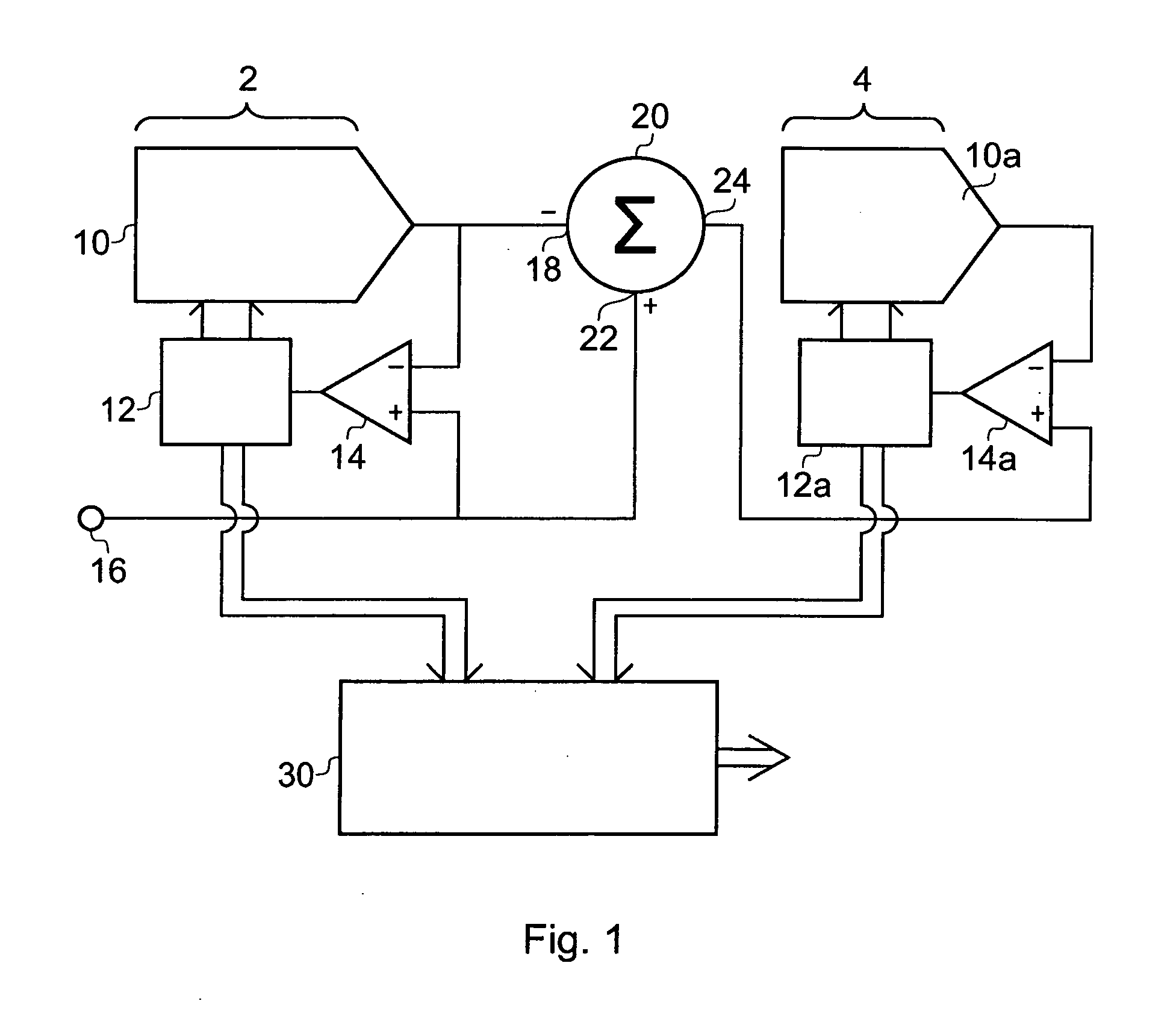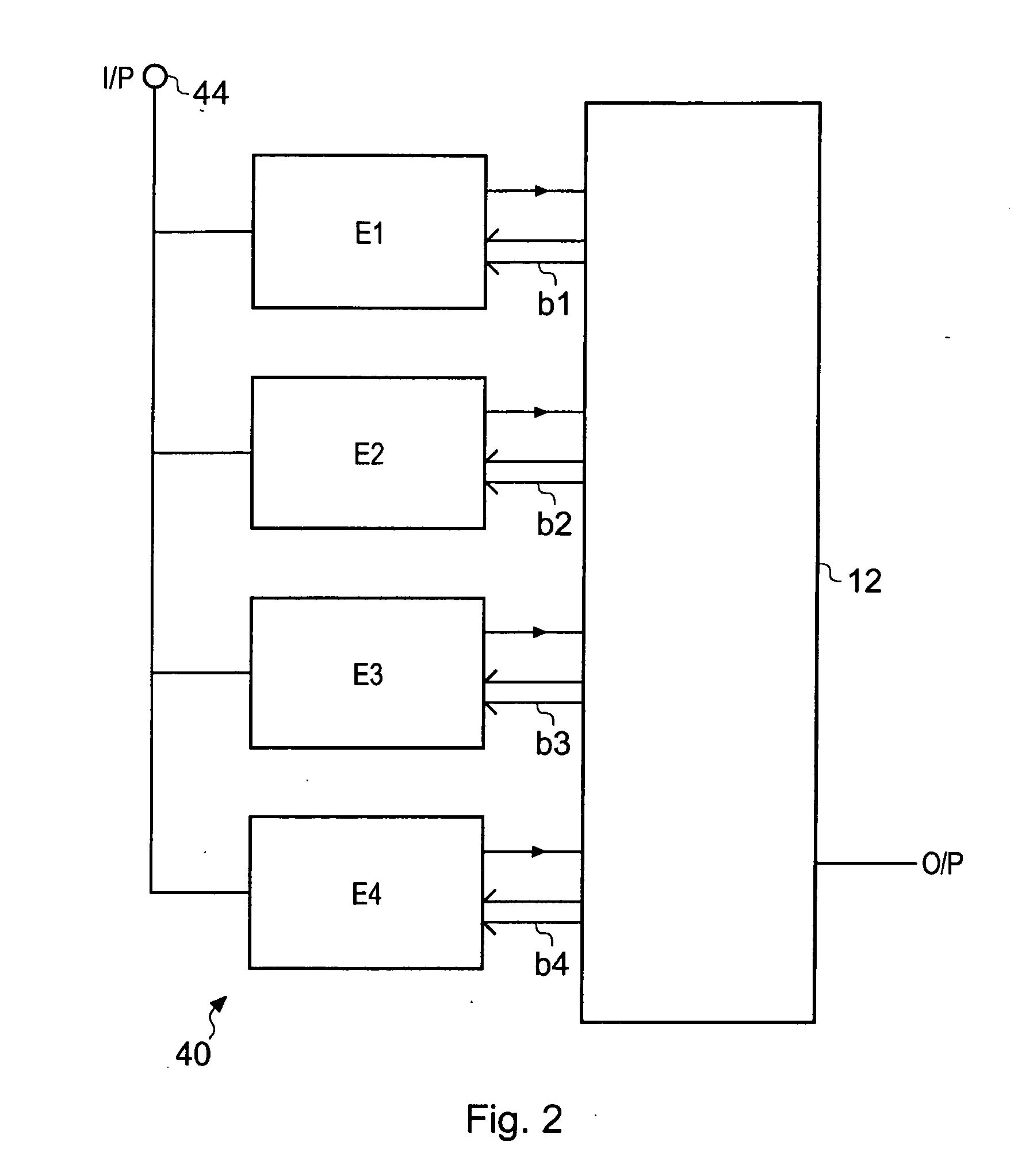Analog to digital converter
a converter and analog technology, applied in analogue/digital conversion, transmission systems, instruments, etc., can solve the problems of high conversion speed, limited resolution, increased cost, etc., and achieve the effect of improving recovery from conversion errors
- Summary
- Abstract
- Description
- Claims
- Application Information
AI Technical Summary
Benefits of technology
Problems solved by technology
Method used
Image
Examples
Embodiment Construction
[0051]FIG. 1 schematically illustrates an analog to digital converter constituting an embodiment of the invention. In essence two converter cores, generally labelled 2 and 4 are provided in series. The conversion task is split between the converters such that the first converter core 2 converts a first and most significant portion of the analog signal, for example the upper 6 to 9 bits of a 16 bit word, and the second converter core 4 determines the remaining least significant bits of the analog to digital conversion.
[0052] In a preferred embodiment of the present invention both converter cores 2 and 4 are implemented as successive approximation converters. The converter cores 2 and 4 will be described in detail later. This allows each converter core to be relatively accurate without incurring the power and input capacitance costs of using a flash converter.
[0053] Returning to FIG. 1, it is beneficial to describe how the pipelined converter architecture shown in the Figure works. ...
PUM
 Login to View More
Login to View More Abstract
Description
Claims
Application Information
 Login to View More
Login to View More - R&D
- Intellectual Property
- Life Sciences
- Materials
- Tech Scout
- Unparalleled Data Quality
- Higher Quality Content
- 60% Fewer Hallucinations
Browse by: Latest US Patents, China's latest patents, Technical Efficacy Thesaurus, Application Domain, Technology Topic, Popular Technical Reports.
© 2025 PatSnap. All rights reserved.Legal|Privacy policy|Modern Slavery Act Transparency Statement|Sitemap|About US| Contact US: help@patsnap.com



